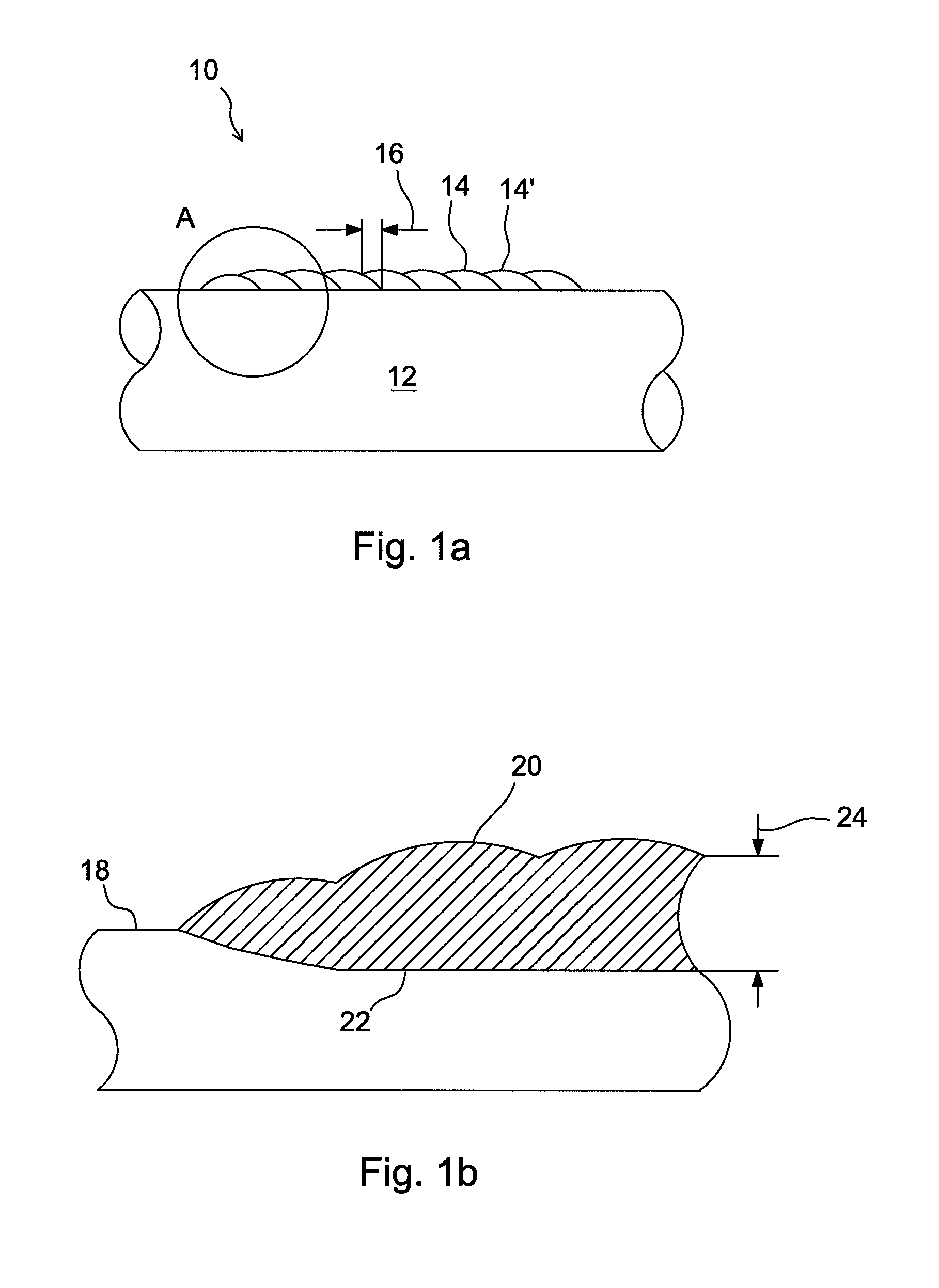Weld Overlay Structure and a Method of Providing a Weld Overlay Structure
a technology of overlay structure and weld, which is applied in the direction of manufacturing tools, corrosion diminishing boiler components, light and heating apparatus, etc., can solve the problems of high heat flux of heat transfer tubes and membrane surfaces, insufficient resistance of base materials to high temperature corrosion, and particulate erosion/corrosion attack
- Summary
- Abstract
- Description
- Claims
- Application Information
AI Technical Summary
Benefits of technology
Problems solved by technology
Method used
Image
Examples
Embodiment Construction
[0033]FIG. 1a shows a schematic cross section of a conventional spiral weld overlay 10, or a 360 degrees weld overlay, on a heat transfer tube 12. The weld overlay is formed by applying a continuous weld bead as a spiral on the outer surface of the tube. Conventionally, the successive circles 14, 14′ of the spiral have a relatively large overlap 16, typically, about 30% to about 50% or from about 6 mm to about 10 mm.
[0034]FIG. 1b shows a schematic enlarged view of the detail A of FIG. 1a. FIG. 1b shows, in addition to the original outer surface 18 of the tube and the outer surface 20 of the formed weld overlay, also the fusion line 22, i.e., the inner surface of the layer that is formed by the welding. The fusion line extends inside the original tube, because the base metal tube material is partially melted and mixed with the high alloy weld material.
[0035]As is shown in FIGS. 1a and 1b, in a conventional weld overlay method is created a cladding, which has a relatively coarse as-we...
PUM
| Property | Measurement | Unit |
|---|---|---|
| Fraction | aaaaa | aaaaa |
| Fraction | aaaaa | aaaaa |
| Length | aaaaa | aaaaa |
Abstract
Description
Claims
Application Information
 Login to View More
Login to View More - R&D
- Intellectual Property
- Life Sciences
- Materials
- Tech Scout
- Unparalleled Data Quality
- Higher Quality Content
- 60% Fewer Hallucinations
Browse by: Latest US Patents, China's latest patents, Technical Efficacy Thesaurus, Application Domain, Technology Topic, Popular Technical Reports.
© 2025 PatSnap. All rights reserved.Legal|Privacy policy|Modern Slavery Act Transparency Statement|Sitemap|About US| Contact US: help@patsnap.com



